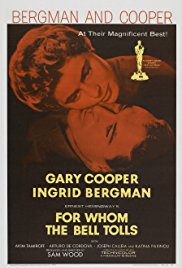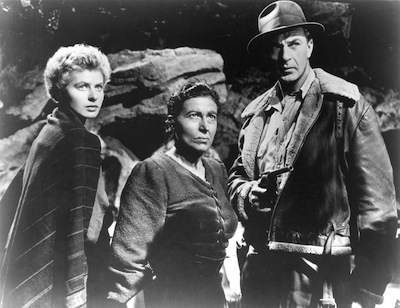The novel For Whom the Bell Tolls was published in 1940 and was a New York Times best-seller. During 1939 – December 1941 there was a vociferous debate in the U.S. about whether the country should shed its isolationist policies and help the Allies (chiefly Britain and Russia) who were fighting the Axis. This book was part of that debate, a voice calling for a more active role by the United States in opposing fascism in Europe.
In 1931, the Spanish monarchy was overthrown and a republican form of government installed. The Republic proposed far-reaching social and economic reforms which alienated the Spanish upper classes. In 1936, a left-wing popular front coalition was elected but a fascist army general, Francisco Franco, began a rebellion. He received equipment, including airplanes and tanks, as well as soldiers and pilots, from Fascist Italy and Nazi Germany. When Franco was on the verge of destroying the Republic, the Soviet Union began to send aid to the Republican forces to counter the help the Nazis and the Italian Fascists were giving to Franco. The Western democracies remained aloof but individuals volunteered to fight the fascists and formed what was called “The Abraham Lincoln Brigade.” During the Spanish Civil War (1936 – 1939) the Germans experimented with many of the techniques that they would use in the Second World War such as carpet bombing of civilian population centers.
More than 600,000 Spaniards died in the Civil War. The country suffered extensive damage. Franco’s rebels won. The Republic was overthrown. A fascist dictatorship was installed that lasted until after Franco’s death in 1975.
The victory of a fascist dictator in the Spanish Civil War was a watershed event in the experience of the generations that lived through the 1930s. It showed, as Albert Camus wrote, “that one can be right and yet be beaten, that force can vanquish spirit, that there are times when courage is not its own recompense.” The fascist victory in the Spanish Civil War was the precursor of a string of fascist military and diplomatic triumphs, including Munich and the Nazi rape of Czechoslovakia, the Anschluss, and the invasions of Poland, Belgium, Holland, Norway, Denmark, France, Greece, North Africa, and European Russia.
Franco died in 1975 and was succeeded as head of state by Juan Carlos, the son of the king who had been deposed by the Republicans. King Juan Carlos, who still sits on the Spanish throne, shepherded the country to a constitutional monarchy and was instrumental in thwarting an attempted right wing military coup in 1981. Juan Carlos is not only popular in Spain, but he is considered a statesman by the world community.
Guernica was a Spanish city that was destroyed by German aerial bombing. Pablo Picasso, the great Spanish painter, protested the random death of innocent civilians in the powerful painting, “Guernica.” If a print of this painting is available in a book you have at home or in the library, show it to your child.
Palmistry is the art of telling the future by reading the lines on a person’s hand. Palmistry is at least 4,000 years old and is still popular today. In most cities you can see the advertisements of palm readers. Palm reading is a form of “divination” which is the art of telling the future through oracles, omens, or signs. Examples of divination are interpretation of the position of the stars (astrology), measuring or evaluating parts of the body (palmistry, phrenology), interpreting the cries of birds and animals (augury), the investigation of the entrails of dead animals (the Romans used this; it is referred to in Julius Caesar), the interpretation of dreams to tell the future, the reading of cards (tarot), looking through crystal balls and the reading of bones (see Moby Dick). Some form of divination has been practiced in all cultures.
Ernest Hemingway (1899-1961) was one of the most influential American novelists of the 20th century. His clear, spare style has influenced innumerable writers. He won the Pulitzer Prize for The Old Man and the Sea in 1953 and he won the Nobel Prize for Literature in 1954. Hemingway was a reporter in WWI and the Spanish Civil War. For Whom the Bell Tolls is based upon his personal experiences. Aging, ill, and depressed, Hemingway committed suicide in 1961. His other works include various collections of short stories, The Sun Also Rises, A Farewell to Arms, and To Have and Have Not.



